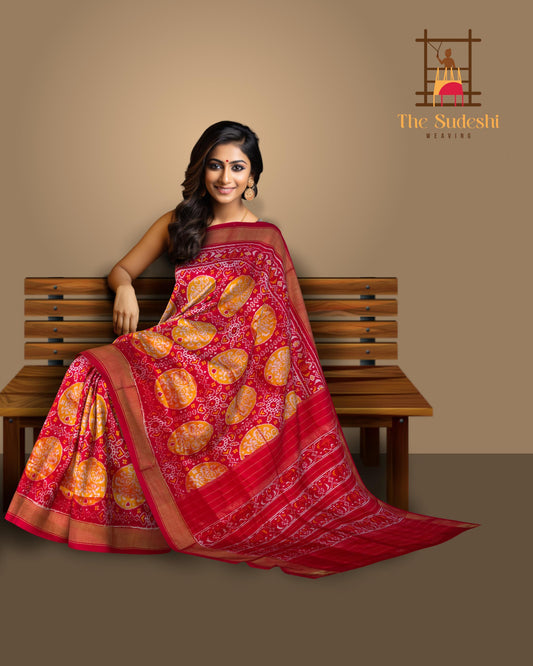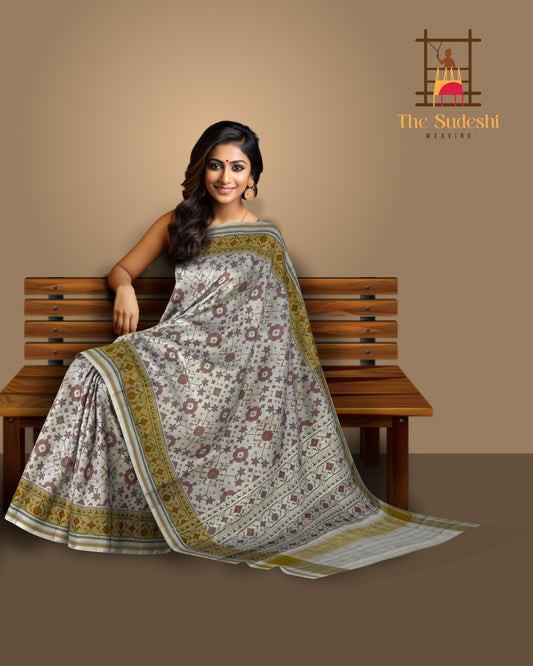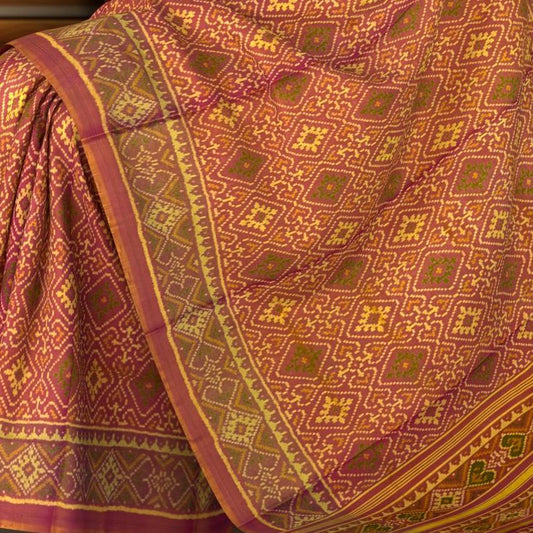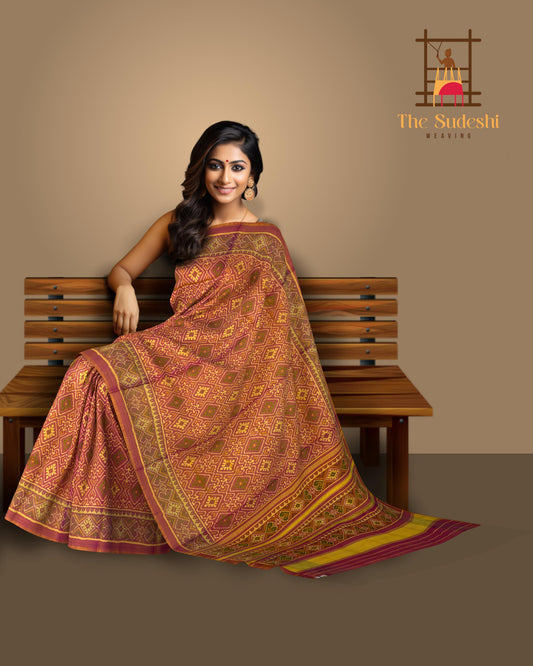Threads of Tradition: The Art of Handloom Sarees Across India
India’s love affair with sarees is timeless. From ancient scriptures to royal courts and modern wardrobes, the saree has evolved—yet remained rooted in tradition. What makes a saree truly special isn’t just its design or drape, but the soul woven into it by the hands of master weavers across the country. Each region, each community, and each loom tells a different story—creating handloom sarees that are not just garments, but legacies.
1. Kanchipuram – The Queen of Silks
Known for their shimmering silk and temple-inspired motifs, Kanchipuram sarees are woven from pure mulberry silk and zari made from real silver and gold threads. The body and the pallu are often woven separately and joined with an intricate technique called korvai, showcasing the finesse of Tamil Nadu’s master weavers.

2. Maniabandha – The Gem of Odisha
Woven with precision by the weavers of Maniabandha and Nuapatna, these sarees are crafted from soft cotton and silk using the unique tie-and-dye ikat technique. Maniabandha sarees often feature Buddhist motifs, reflecting the spiritual roots of the region, and are entirely handwoven with a Sudeshi weaving essence that celebrates slow, sustainable craft.
3. Assam’s Muga and Eri Sarees
Assam offers the world’s rarest silk – Muga. These golden-hued sarees are durable, elegant, and get shinier with every wash. Alongside Muga, Eri silk—also known as Ahimsa silk—is prized for its warmth and eco-friendliness. The intricate floral and tribal patterns are handwoven by Assamese women on traditional bamboo looms.
4. Banarasi – Threads of Royalty
Originating from the ghats of Varanasi, Banarasi sarees are known for their rich zari work, Mughal-inspired motifs, and luxurious texture. Weaving one saree can take weeks or even months, as the artisans use traditional pit looms and time-honored techniques passed down through generations.
5. Chanderi – Sheer Grace from Madhya Pradesh
Woven with silk, cotton, and zari, Chanderi sarees are known for their feather-light texture and transparency. Motifs like peacocks, lotuses, and coins are delicately woven into the fabric using the traditional butti technique, creating an ethereal effect that's perfect for festive and formal wear.

6. Patola – The Double Ikat Wonder of Gujarat
Among the most intricate weaves, Patola sarees from Patan use the double ikat technique, where both warp and weft threads are tie-dyed before weaving. It requires incredible precision, and a single saree can take months to finish. These sarees are often passed down as heirlooms.
7. West Bengal’s Jamdani and Baluchari
Jamdani sarees are ethereal muslin weaves with handwoven geometric and floral motifs, often crafted from the finest cotton. Baluchari sarees, on the other hand, narrate epics like the Ramayana and Mahabharata through elaborate scenes woven into the pallu using silk threads.







Leave a comment
Please note, comments need to be approved before they are published.